A typical vestment is a cloth fastened over the collar and around the neck. Generally, it is worn on top of a regular attire that people wear. During masses, a celebrant wears one, and you can also notice that the deacons and subdeacons also wear them.
It hangs from the collar and down to the body of the person wearing it. It also has a cord that serves the purpose of cinching the Alb. The Alb is cinched at the waist of the person wearing these specifics in the church during the mass or service.
Origin of the Sacred Vestment
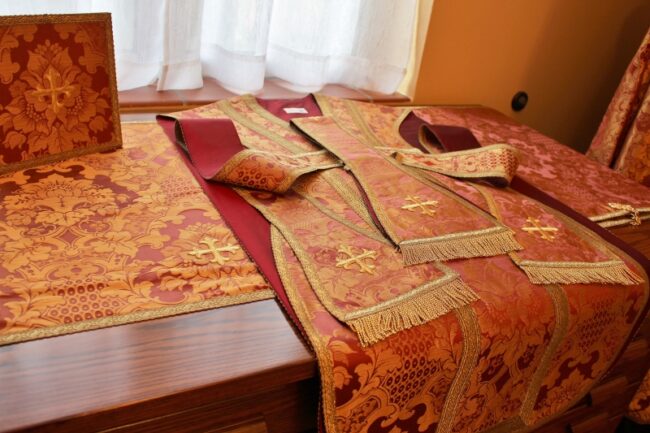
Any vestment that is worn at a church is considered to be sacred. These days we see the church vestments worn only in Anglican and Roman Catholic churches. However, these have a long history, and their origins date right from the time churches came into existence.
These garments are not merely functional but are imbued with symbolism. They represent the priesthood and are considered to embody the sacred and the divine, marking a distinct separation between the ordinary and the ceremonial.
Each piece of the vestment carries specific meanings and purposes, often detailed in religious texts or traditions, which dictate that church leaders must don these garments during sacred rites. This practice emphasizes the sanctity of the rituals and the purity required both in physical presence and spiritual state.
Interestingly, the standardization of these vestments across the Catholic Church did not occur until the 13th century. Before this period, local traditions and materials heavily influenced the style and type of vestments.
However, by the late Middle Ages, the Church sought uniformity in the religious attire worn by clergy during liturgical services, which helped to unify the visual and symbolic aspects of church ceremonies across different regions.
This evolution of church vestments reflects both the changing dynamics within the Church and the broader shifts in European religious practices and artistic expressions during that era.
Purposes of the Vestment
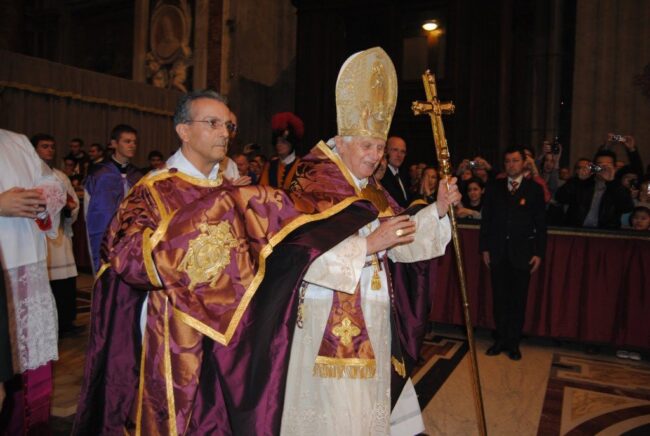
The purpose of the vestment varies significantly across different cultures and religious contexts. In some traditions, the vestment is primarily utilitarian, serving as a cover for everyday clothing during religious services. However, in many other contexts, these garments hold a sacred significance, worn by celebrants during a variety of rites.
Such ceremonies can include masses, marriages, funerals, and holy communion, among others. The significance and usage of vestments can differ widely due to varying religious laws and cultural practices from one country to another. Whether for legal ceremonies like naming ceremonies and memorial services or more personal rites such as name changes and house dedications, the wearing of these vestments is a common requirement that adds a formal and often spiritual dimension to the proceedings.
In the spirit of enhancing the choir’s appearance and morale, MyChoirRobes offers a selection of affordable choir robes, direct from Montana. It’s commonly agreed that a choir performs better when it looks cohesive and professional, enhancing the overall effectiveness and spirit of the service.
Primary Reasons for Wearing a Vestment
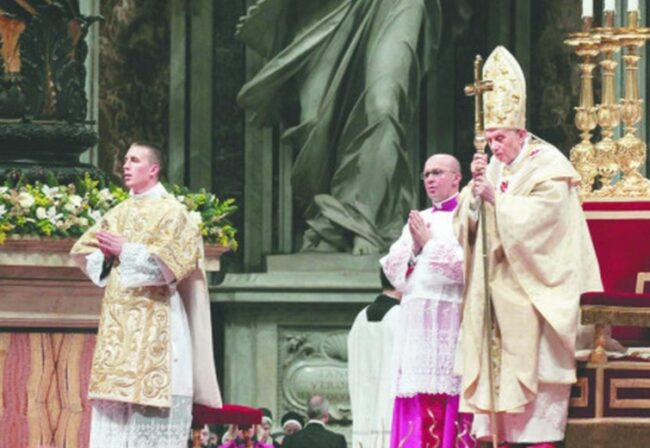
Over the years, there have been many reasons that specify the purpose for priests and leaders of the church to wear a vestment. Each church has a different reason for wearing this type of attire on top of the clothes they commonly wear.
We look at some of the top and common reasons for them to wear a vestment below:
- To remind or make the congregation aware that the leaders or priests are not acting on their own will but by spiritual guidance.
- That the priests or leaders are following standard protocols of the office, which are vital to the church and the church’s culture.
- To remove any common mistakes that may come up if they wear the ordinary attire used by the common man.
- To also ensure that the congregation is not distracted by any means with the type of usual or unusual clothing they might wear.
- To avoid confusion on the standards of attire for the priests and leaders when it comes to presiding over a ceremony or a mass.
Different Parts or Types of Vestments
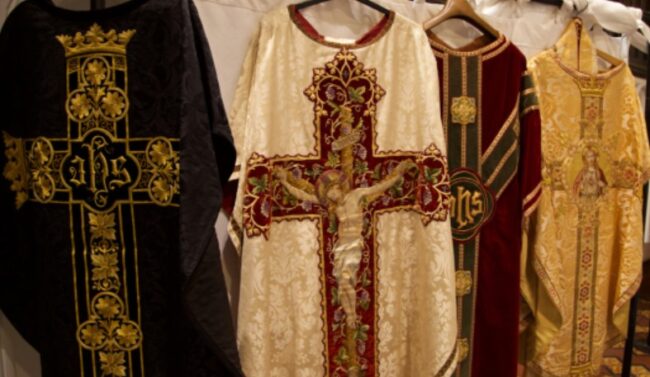
Although we have listed different parts and types of vestments, they might differ from one denomination of church to another. It may also vary following the church rules, laws, protocols, and practices.
- Chasubles: Bishops and Roman Catholic priests are known to wear this. Typically worn during masses or celebrating the eucharist, this is the outermost part of the vestment.
- Deacon Dalmatics: Worn during mass or other services, this is also an outermost garment. Anglican, Roman Catholic, and Lutheran denominations are known to use this.
- Humeral Veil: Anglican, Roman Catholic, and Lutheran denominations use these types.
- Overlay Stole: This is just a band of cloth that the Anglican, Roman Catholic, and Lutheran denominations use.
- Copes: These are for priests and bishops, but there are instances when deacons wear them too. Worn similar to cape, these are essential for prayers that are conducted outside the mass. Anglican, Roman Catholic, and Lutheran denominations commonly use these.
- Mitres: Abbots and Bishops are known to wear this headdress. Anglican, Roman Catholic, and Lutheran denominations use it during masses and other services.
Who Owns the Vestment?

The ownership of vestments, particularly those worn by priests during liturgical services, typically resides with the parish. This ownership includes the various garments required for different types of services and ceremonies. The parish’s responsibility to provide these vestments ensures that all clergy have the necessary attire to perform their religious duties appropriately and with uniformity.
However, there are instances where priests or church leaders receive vestments as gifts from parishioners, friends, or family members.
These gifted items can be personal and often hold sentimental value, yet the primary set of liturgical vestments used in regular church services remains under the ownership of the parish. This distinction is important for maintaining the standardized appearance of clergy during official ceremonies and for the proper care and management of these sacred garments.
It is also worth noting that the parish not only owns but typically also takes on the responsibility for the maintenance, cleaning, and replacement of these vestments. This ensures that the garments remain in good condition and are ready for use in various liturgical functions, reflecting the solemnity and dignity of the occasions they are used for.
Where to Buy a Vestment?
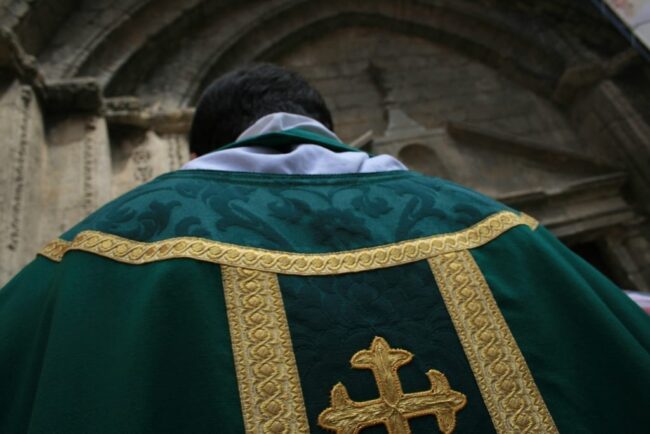
There may be a few things that you must be aware of before you choose to buy a vestment as a gift or for practical use. Here are some of them:
- Culture that the church follows
- Material that the vestment should be made of
- Standard protocols on color.
These are only a few things about vestments amongst all churches. However, your church might have specific standards and protocols that you have to be familiar with before buying.
One of the better ways to purchase vestments would be to consider all the options available and compare them. Using reviews and testimonials will help you to a certain extent if you are looking at an online or offline store.
You can check out www.wattsandco.com to find different types of vestments. You may also find vestments on sale in these stores that would help you get a good discount. Moreover, reading these testimonials and reviews would ensure that you would not end up buying the wrong product.
Some websites also offer churches customized vestments. It is to ensure that the vestment is on par with the requirements and recommendations of the church. Ideally, the ordering part of these vestments can be done with a knowledgeable church leader.
Conclusion
We have tried to include all details associated with vestments in this article. From the origin of vestments to where they are sold, we have included everything in this guide. We hope you get to learn more about the vestments from this post.
